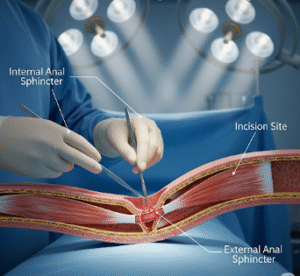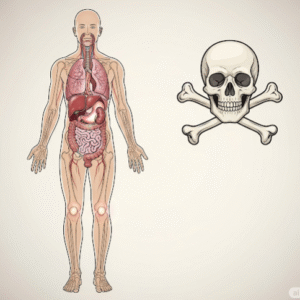Overview
Syphilitic aortitis is a rare but serious complication of tertiary syphilis that affects the aorta, the largest artery in the body. It occurs when untreated syphilis spreads to the cardiovascular system, leading to inflammation and damage of the aortic wall. In Korea, the incidence of syphilitic aortitis is low due to effective public health measures, early syphilis detection, and antibiotic treatments. However, late-stage complications like this can still occur in undiagnosed or untreated cases.
What is Syphilitic Aortitis?
Syphilitic aortitis is a manifestation of cardiovascular syphilis, typically developing 10–30 years after the initial infection with Treponema pallidum, the bacterium responsible for syphilis. The infection causes inflammation of the aorta, especially the ascending thoracic segment. This inflammation can weaken the arterial wall, potentially leading to life-threatening conditions such as aneurysms or aortic valve insufficiency.
Symptoms
Many individuals with syphilitic aortitis remain asymptomatic for years. When symptoms appear, they may include:
- Chest pain or discomfort
- Shortness of breath
- Coughing or hoarseness
- Swelling in the upper body
- Signs of heart failure (in advanced cases)
- A pulsating mass in the chest (in case of an aneurysm)
Causes
Syphilitic aortitis is caused by chronic infection with Treponema pallidum that progresses to the tertiary stage. The bacteria infiltrate the vasa vasorum (small vessels supplying the aortic wall), leading to inflammation, necrosis, and weakening of the vessel.
Risk Factors
- Untreated or inadequately treated syphilis
- Lack of access to healthcare
- Immunocompromised individuals (e.g., HIV patients)
- Multiple sexual partners or unprotected sex
- Older age (due to delayed progression)
Complications
If left untreated, syphilitic aortitis can result in:
- Aortic aneurysm – a bulging or rupture of the aorta
- Aortic regurgitation – leakage of blood back into the heart
- Thrombosis – formation of blood clots
- Heart failure
- Sudden death from aortic rupture
Prevention
Preventing syphilitic aortitis relies on early detection and treatment of syphilis:
- Regular STI screenings, especially for high-risk groups
- Prompt antibiotic treatment with penicillin
- Use of protection during sexual activity
- Public health education and awareness
- Follow-up testing after syphilis treatment
Treatment Options in Korea
South Korea offers advanced care for both syphilis and its cardiovascular complications through a well-developed healthcare infrastructure.
Diagnosis
- Serologic testing for syphilis (e.g., VDRL, FTA-ABS)
- Imaging (CT angiography, echocardiography, MRI) to detect aortic involvement
- Cardiac catheterization in advanced or unclear cases
Medical Treatment
- Penicillin G is the first-line treatment, administered intravenously for tertiary syphilis
- Alternative antibiotics like doxycycline (for those allergic to penicillin)
- Monitoring and follow-up to confirm bacterial clearance
Surgical Treatment
For patients with severe aortic damage or aneurysm:
- Aortic repair or grafting by cardiothoracic surgeons
- Valve replacement surgery if aortic insufficiency is present













